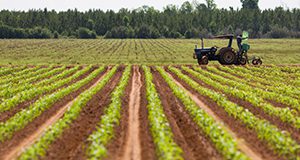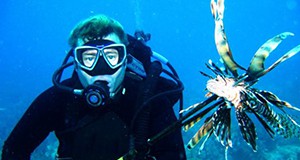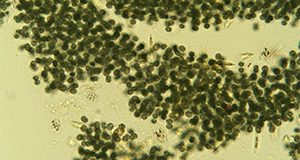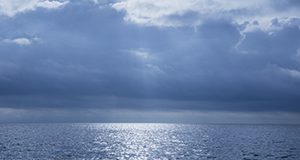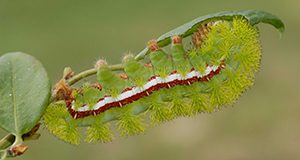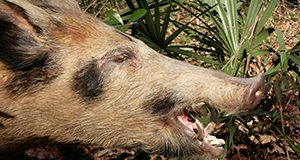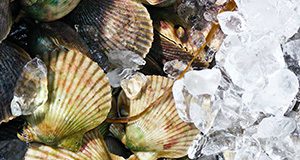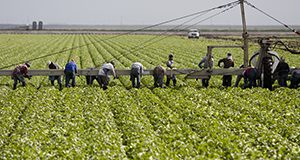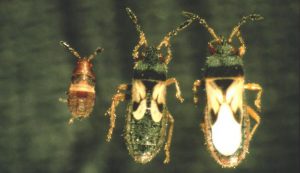This 12-page fact sheet written by Kevin Athearn and Jennifer Johns and published by the UF/IFAS Food and Resource Economics Department lists steps for starting a farm business in Northeast Florida, along with resources and contact information to assist a new farmer with completing each step.
http://edis.ifas.ufl.edu/fe1042
Author: Susan Gildersleeve
Blueberry Frost Protection Practices in Florida and Georgia

Written by Tatiana Borisova, Elizabeth Conlan, Erick Smith, Mercy Olmstead, and Jeffrey Williamson and published by the UF/IFAS Food and Resource Economics Department, this publication was developed to assist professionals attempting to establish a benchmark for when to use frost protection in blueberry production. This benchmark can assist in developing outreach strategies to educate producers about frost protection strategies, and it can also help measure changes in their frost protection behavior over time.
http://edis.ifas.ufl.edu/fe1045
An Overview of Florida Water Policy Framework and Institutions
Written by Jarrett Davis, Tatiana Borisova, and Michael T. Olexa and published by the UF/IFAS Food and Resource Economics Department, this publication provides a background on the history of laws and regulations governing water use in Florida and an overview of those laws.
edis.ifas.ufl.edu/fe1043
A Guide to Common Stony Corals of Florida
Shallow-water coral reefs have seen large declines in coral cover over the last 40 years. This 19-page guide written by Joseph A. Henry, Roy P. E. Yanong, Maia P. McGuire, and Joshua T. Patterson and published by the UF/IFAS Program in Fisheries and Aquatic Sciences of the School of Forest Resources and Conservation describes Scleractinian (stony) corals that were once prevalent on reefs in Florida. The Coral Reef Protection Act in Florida prohibits damaging coral reef habitats in any way, and several of these species are federally protected under the Endangered Species Act. In their natural environment, these corals should never be handled or touched. Although several of the species discussed here are growing more numerous due to their wide tolerance, the overall condition of coral reefs along our coastline is declining, and the reefs are highly threatened because the most important reef-building corals are in a state of decline.
http://edis.ifas.ufl.edu/fa210
Labor Shortages in the Florida Strawberry Industry
Florida is the largest supplier of domestic winter strawberries in the United States, and labor is the largest cost item in the Florida strawberry production budget. Labor shortages are a major threat to the industry. This 3-page fact sheet written by Trina Biswas, Feng Wu, and Zhengfei Guan and published by the UF/IFAS Food and Resource Economics Department investigates growers’ labor demand and labor shortages based on a survey conducted in 2016.
https://edis.ifas.ufl.edu/fe1041
First report of an emerging ulcerative skin disease in invasive lionfish
A disease first reported in the summer of 2017 has been causing skin ulcers in invasive lionfish off the coasts of Florida and the Caribbean. Fish health scientists are investigating this disease, but initial evaluations have not yet found the cause. This 7-page fact sheet written by Holden E. Harris, Alexander Q. Fogg, Roy P. E. Yanong, Salvatore Frasca Jr., Theresa Cody, Thomas B. Waltzek, and William F. Patterson III and published by the UF/IFAS program in Fisheries and Aquatic Sciences of the School of Forest Resources and Conservation describes research efforts to discover more about this disease and its potential to spread to other species as well as its effect on lionfish populations, the lionfish fishery, and reef fish communities.
http://edis.ifas.ufl.edu/fa209
Dune Restoration and Enhancement for the Florida Panhandle
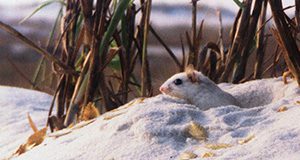
Published by the UF/IFAS Florida Sea Grant College Program, this manual provides an overview of the coastal ecosystems along the Florida Panhandle and shows how dunes can be restored and enhanced in this region of the Northern Gulf of Mexico.
In addition to direct experience acquired over many years of field work and experimentation, authors Chris Verlinde, Mack Thetford, and Debbie Miller consulted peer-reviewed academic journals, government documents, and various online resources to create the manual. Undergraduate and graduate students from the University of Florida and local professionals worked together with the UF/IFAS researchers to develop and test practical restoration techniques for Florida’s dunes.
http://edis.ifas.ufl.edu/sg156
Assessment of the Economic Impact Associated with the Recreational Scallop Season in Hernando County, Florida
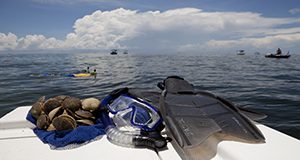
Recreational scalloping has become an increasingly popular activity within the Big Bend region of Florida, and Hernando County is the southern extent of healthy, harvestable bay scallop populations. State resource managers and County administrators expressed a need to know how the recreational scallop season impacts the local economies. This 10-page fact sheet written by Brittany Hall-Scharf, Charles Adams, Alan Hodges, and Stephen Geiger and published by the UF/IFAS Florida Sea Grant College Program and the UF/IFAS Food and Resource Economics Department presents results from a UF/IFAS study to determine the economic benefits derived from coastal and waterway access during recreational scalloping season in Hernando County.
http://edis.ifas.ufl.edu/sg161
Production and Performance of Triploid Oysters for Aquaculture

This 9-page fact sheet written by Huiping Yang, Natalie Simon, and Leslie Sturmer and published by the Program in Fisheries and Aquatic Sciences of the UF/IFAS School of Forest Resources and Conservation focused on basic aspects of triploid oyster aquaculture, including the general oyster aquaculture industry, the approaches for triploid induction, performance of triploids, and correlated ploidy determination to convey basic knowledge of triploid oyster aquaculture to the oyster industry and the general public.
http://edis.ifas.ufl.edu/fa208
Florida Beekeeping Management Calendar
Climate, plant communities, and timing of floral resources differ significantly across Florida, which means that management of European honey bee colonies in Florida differs as well. This 8-page fact sheet written by James D. Ellis, Mary C. Bammer, and William H. Kern and published by Department of Entomology and Nematology outlines a management calendar created for Florida beekeepers. It is specific to region (north, central, and south Florida) and month and includes recommendations for major management considerations like when to treat for parasites or pathogens and when to feed colonies or harvest honey. This management calendar, while not exhaustive, is a valuable reference or starting point for honey bee colony management in Florida.
http://edis.ifas.ufl.edu/in848
Managing Insecticide and Miticide Resistance in Florida Landscapes
Resistance to insecticide or miticide is a worry for landscape managers. Around the world, chinch bugs, leafminers, and other insect and mite pests have become resistant to dozens of insecticides, but with diligent insecticide resistance management, we can still maintain long-term effective chemical control. With few new modes of action coming onto the market, landscape managers need to be good stewards of existing products. Ultimately, resistance management means reducing exposure of pests to any one pesticide. Fortunately, there are many ways to prevent resistance and still control pests of ornamental plants and lawns, and this 6-page fact sheet written by Nicole Benda and Adam Dale and published by the UF/IFAS Entomology and Nematology Department explains how.
http://edis.ifas.ufl.edu/in714
Barotrauma and Successful Release of Fish Caught in Deep Water
If you catch a fish you are not going to keep, help it survive and get back to the deep! Throwing back your unwanted catch is good practice because healthy released fish can live to grow and reproduce, which benefits the fish population and the future of fisheries. But deepwater fish can have trouble getting back where they came from without a little assist from the angler. This 4-page fact sheet written by Betty Staugler, Holly Abeels, Angela Collins, Shelly Krueger, and Kai Lorenzen and published by the UF/IFAS Florida Sea Grant College Program describes barotrauma, a problem that, if left untreated, will kill otherwise perfectly healthy fish, and explains a few quick and simple methods to relieve fish suffering from barotrauma and help them get back home healthy and strong.
http://edis.ifas.ufl.edu/sg160
A Response to Frequently Asked Questions about the 2018 Lake Okeechobee, Caloosahatchee and St. Lucie Rivers and Estuaries Algal Blooms
Heavy rainfall with Hurricane Irma in 2017 and a rainy spring in 2018 set the stage for large-scale summer algal blooms in Lake Okeechobee and the St. Lucie and Caloosahatchee Rivers and Estuaries. Concerned residents and visitors flocked to social media. Authors Lisa Krimsky, Ed Phlips, and Karl Havens read their posts and tweets and now respond to concerns and questions about algal blooms in this 7-page fact sheet published by UF/IFAS Extension and the Florida Sea Grant College Program.
http://edis.ifas.ufl.edu/sg159
Ocean Acidification: An Introduction
Ocean acidification is the ongoing decrease in ocean pH caused primarily by the ocean’s taking up excess carbon dioxide from the atmosphere. Other impacts related to climate change (increased sea level rise, coastal flooding and extreme weather events) often receive more attention, but the acidification of the Earth’s oceans is well documented and is a major concern for the marine science community. This 4-page fact sheet written by Joshua Patterson and Lisa Krimsky and published by the UF/IFAS Program in Fisheries and Aquatic Sciences, School of Forest Resources and Conservation is the first in a series that addresses ocean acidification in Florida. It specifically explains the changes that are occurring to the chemistry of our coastal and oceanic waters because of elevated carbon dioxide levels. Additional publications address potential environmental, economic, and social implications for Florida.
http://edis.ifas.ufl.edu/fa206
Biology and Management of the Bermudagrass Mite, Eriophyes cynodoniensis
The bermudagrass mite, Eriophyes cynodoniensis (Sayed) (Arthropoda: Arachnida: Eriophyidae), also known as the couch grass mite, can be a serious pest of bermudagrass in multiple high-maintenance turf systems such as sod production, athletic fields, and golf courses. Mites cause leaf and bud galls, which can lead to severe aesthetic damage and plant decline or death in high-maintenance areas with low tolerance for plant damage. In this 7-page fact sheet written by Pablo Agustin Boeri, Nicole D. Benda, J. Bryan Unruh, and Adam Dale and published by the UF/IFAs Entomology and Nematology Department, review the biology, identification, and management of the bermudagrass mite, and get specific management recommendations based on evidence from UF/IFAS research.
https://edis.ifas.ufl.edu/in1217
Stinging and Venomous Caterpillars of the Southeast
Wasp and bee stings are familiar to most people, but some might be surprised to learn that several caterpillars can also sting. Unlike wasps and bees with stingers, these caterpillars have barbed hairs that break off the caterpillar when it brushes against something. The hairs embed in skin and cause sudden or gradually building pain. The severity of a caterpillar sting varies based on the person and number of spines in the skin. Many stinging caterpillars also release a toxin on contact, which may cause health problems for some people. This 4-page fact sheet written by Rebecca Perry and Adam Dale and published by the UF/IFAS Department of Entomology and Nematology describes several stinging caterpillars commonly found throughout the southeastern United States.
https://edis.ifas.ufl.edu/in014
Feral Swine Trapping: Techniques and Designs
Feral swine are an invasive or nuisance species in Florida and most other states because their incessant rooting is ruinous to natural and agricultural habitat. They loosen the soil, destroy native vegetation, and modify the natural chemistry and nutrients of the soil, causing widespread destruction in natural ecosystems, agricultural areas, livestock pastures, and residential areas. They also carry numerous diseases, some of which are transmittable to wild and domestic animals and humans. Trapping and removing swine from your property is an effective way to reduce or control feral swine populations. This 9-page fact sheet written by Bethany Wight and Raoul K. Boughton and published by the UF/IFAS Wildlife Ecology and Conservation Department describes the most commonly used trapping techniques and illustrates several trap and gate designs.
https://edis.ifas.ufl.edu/uw440
Best Practices for Scalloping: From the Boat to Your Plate
Recreational scalloping in Florida is a popular group activity for many residents and visitors throughout the summer months. This 6-page fact sheet written by Brittany Hall-Scharf, Sarah Ellis, and Savanna Barry and published by the UF/IFAS Florida Sea Grant College Program lists the legal requirements for boating and scalloping, provides a safety plan to minimize and/or prevent accidents while you’re out on the water, and explains proper shucking methods to ensure that the meals you make from your catch will be safe and delicious.
https://edis.ifas.ufl.edu/sg158
The Migration Pattern of Florida Seasonal Farmworkers
This 4-page fact sheet written by Zhengfei Guan, Berdikul Qushim, Feng Wu, and Alicia Whidden and published by the UF/IFAS Food and Resource Economics Department investigates the migration pattern of seasonal farmworkers based on a survey of strawberry harvesters conducted in 2016. In the survey, we asked workers where they were working and what crops they were working on before their current jobs. We also asked where they would migrate and what crops they would be working on after the strawberry harvest. We found that most workers were from Florida, Michigan, North Carolina, and California in that order, and that similar percentages of workers would migrate to these states after the job. Blueberries, tomatoes, and apples were the top three crops they were working on before and after their current jobs.
http://edis.ifas.ufl.edu/fe1040
Managing Southern Chinch Bug in Warm Season Turfgrasses
Southern chinch bug, Blissus insularis Barber, is the most damaging insect pest of St. Augustinegrass in the United States. St. Augustinegrass is the most common turfgrass used in Florida. The ubiquity of this single turfgrass species makes southern chinch bug an economically important pest in the state. In fact, chinch bugs cost Florida homeowners and professionals millions of dollars every year. This 7-page fact sheet written by Eileen A. Buss, Brianna M. Whitman, and Adam G. Dale and published by the UF/IFAS Department of Entomology and Nematology describes the biology of the pest and the damage it causes and lists ways to scout and monitor for chinch bugs and some strategies for control of the pest.
http://edis.ifas.ufl.edu/lh036
